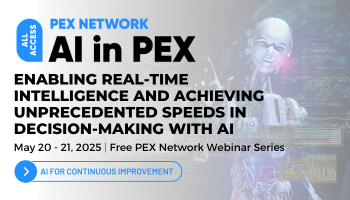Conversational AI in intelligent document processing
Users seek more intuitive, experience-based IDP solutions as the market matures
Add bookmark
As more industries realize the potential of intelligent document processing (IDP) they have increased investment in it, leading to a greater availability of basic IDP solutions from vendors. This has created a gap between customer expectations and what the market is offering. This gap can be filled with the help of conversation AI technology. Today, most platform interfaces rely on cumbersome menus and static workflows that constrain user experiences.
However, users seek more intuitive, experience-based IDP solutions as the market matures. By incorporating natural language processing and machine learning, conversational IDP can transform how users interact with these documents. The users could use conversational interfaces to extract data, automate document workflows and glean insights by simply posing queries or issuing voice commands in natural language. Vendors who can offer such intuitive IDP solutions are likely to stand out in a competitive market and meet the evolving needs of users.
Don't miss any news, updates or insider tips from PEX Network by getting them delivered to your inbox. Sign up to our newsletter and join our community of experts.
IDP platform interfaces hamper usability
While IDP solutions have made great improvements in capabilities like data extraction, document automation and classification, most platforms come saddled with interfaces that hamper usability. Users often struggle with steep learning curves to master convoluted menu trees, deal with fragmented workflows for document-centric tasks spanning multiple systems and face barriers to tailor platforms to their specific needs.
Fundamentally, the inability of users to interact with IDP systems conversationally poses adoption challenges. Whether it’s lawyers parsing legal contracts, analysts extracting insights from research reports or compliance officers evaluating regulatory policies, users cannot simply query IDP platforms in plain language and have their document-related questions answered seamlessly. Even straightforward questions like “What’s the status of purchase order processing for supplier X?” might need browsing several tabs and intricate GUI workflows. Additionally, many IDP tools lack personalization and customization capabilities aligned to vertical needs, and out-of-the-box solutions fail to capture nuances within specific domains, ultimately slowing user tasks.
DOWNLOAD: Intelligent document processing 2023 industry report
Bridging the IDP usability gap
However, not the whole industry is lagging. A few vendors are trying to build features to bridge this existing gap. Some vendors offer the option for coding customizations, but this approach may not be suitable for citizen developers or business teams who rely on these platforms for their daily operations. Fundamentally, IDP lacks humanized interfaces that remove friction and mimic the way humans naturally interact.
The conversational IDP system would analyze historical sales reports, generate insights through natural language and accelerate decision-making. Such conversational interfaces could enable lawyers to instantly parse legal terms within a contract by asking questions in natural language. For example, what are the payment terms if the client defaults? The IDP platform would understand the question, extract relevant clauses and conversationally deliver accurate responses.
Similarly, analysts could gain quick business insights by asking, which products had the biggest sales drop in Germany last quarter? without needing data visualizations. The conversational IDP system would analyze historical sales reports, generate insights through natural language and accelerate decision-making. By allowing users to converse with documents, AI promises to surface hidden knowledge and automate processes through intuitive, frictionless interactions.
User experience pivotal in driving IDP forward
The user experience will be pivotal in steering IDP adoption going forward. As IDP permeates everyday business roles, solutions with intuitive navigation and interactions will gain traction. Vendors must mimic the strengths of human conversation in their interfaces. Integrating conversational AI through natural language processing will enable users to query documents and drive workflows through simplified voice and text interactions. Rather than grappling with complex menus, business teams could extract insights from contracts or reports by simply asking questions conversationally. This human-centric approach also taps into the increasing potential of generative AI to enhance document understanding and intelligence.
Despite conversational AI’s promise, seamless integration with complex IDP capabilities poses engineering challenges. Success requires robust R&D around document-specific natural language processing and knowledge graph training aligned to different verticals. Extensive testing and collaboration with domain experts across diverse fields will be required to account for complexities and variations in legal, healthcare and other specialized documents. Conversational interfaces powered by AI could transform rigid document interactions into simple, intuitive conversations that mimic human strengths, but this requires reimagining IDP to place user experiences in front and center.
All Access: AI in PEX is 2025

All Access: AI in PEX 2025 is designed to address these challenges and empower organizations to successfully integrate AI into their process improvement initiatives. The content series will bring together industry experts, thought leaders, and practitioners to share insights, best practices, and real-world case studies.
Register Now



























